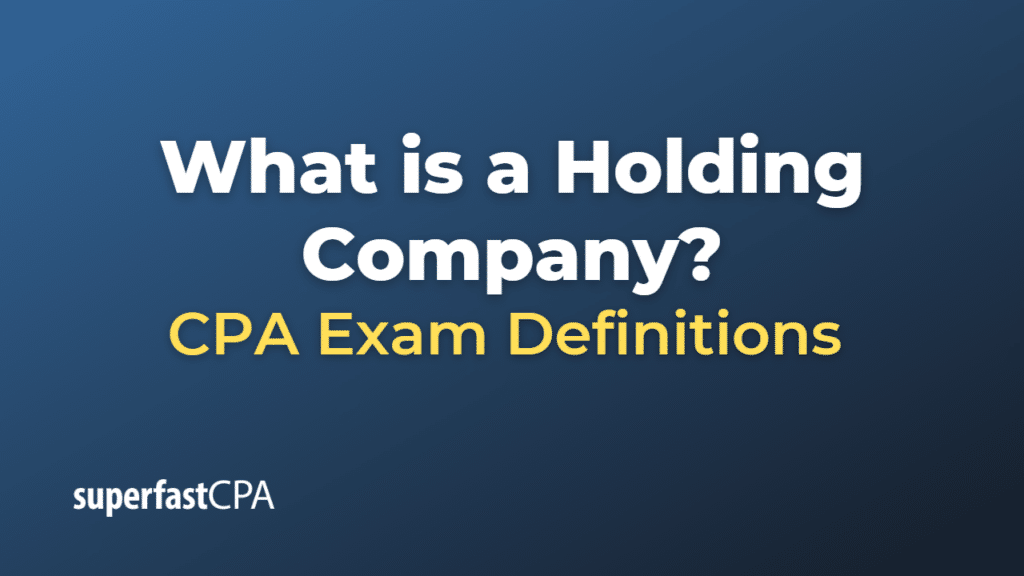Holding Company
A holding company is a type of business entity that is created to own and manage other companies’ stocks, bonds, or assets, rather than produce its own goods or services. The main purpose of a holding company is to control these other companies, often referred to as subsidiaries.
Holding companies can control a subsidiary by owning more than 50% of its stock, giving them voting rights and the ability to influence management decisions. In some cases, a holding company might own 100% of a subsidiary’s stock, making the subsidiary a wholly-owned subsidiary.
Benefits of a holding company structure include:
- Risk Management: By structuring different business units as separate entities, companies can isolate risks. If one subsidiary fails or faces legal issues, it won’t directly affect the other subsidiaries or the holding company itself.
- Financial Efficiency: Holding companies can take advantage of consolidated tax returns and the potential for more favorable loan rates or financial terms due to their larger asset base.
- Control over Subsidiaries: Despite not being involved in the subsidiaries’ daily operations, the holding company can exert influence on their strategic decisions through its voting power.
- Ease of Business Sales or Transfers: By having different businesses as separate entities, it can be easier to sell or transfer parts of the overall business.
Notable examples of holding companies include Berkshire Hathaway, which owns Geico, Duracell, and parts of many other companies; and Alphabet Inc., the holding company that owns Google, YouTube, and other companies.
Example of a Holding Company
Let’s take the example of Berkshire Hathaway, which is one of the most well-known holding companies in the world.
Berkshire Hathaway, led by Warren Buffett, owns a diverse range of companies in different industries. For instance, it owns:
- Insurance companies, like Geico and General Re.
- Utilities and energy companies, like PacifiCorp and MidAmerican Energy.
- Manufacturing, service, and retailing operations, like Lubrizol (a chemical producer), NetJets (a private aviation company), and See’s Candies.
- Food companies, like Dairy Queen and Heinz.
- Retailers, like Nebraska Furniture Mart and the jewelry chain Borsheims.
- Media companies, like The Buffalo News.
In addition to wholly owning these companies, Berkshire Hathaway also holds significant minority stakes in other large public companies, such as Apple, Bank of America, and Coca-Cola.
So, rather than producing its own goods or services, Berkshire Hathaway’s business model is based on owning shares in these other companies. It uses the profits from its holdings to invest in more companies, thereby growing its portfolio and, consequently, its revenue.
It’s also important to note that while Berkshire Hathaway holds controlling interest in these companies, they all operate independently of one another. The risks, debts, and legal issues of one subsidiary do not transfer to the others or to Berkshire Hathaway itself. This structure allows each company to focus on its own operations while benefiting from the financial strength and strategic guidance of the holding company.













